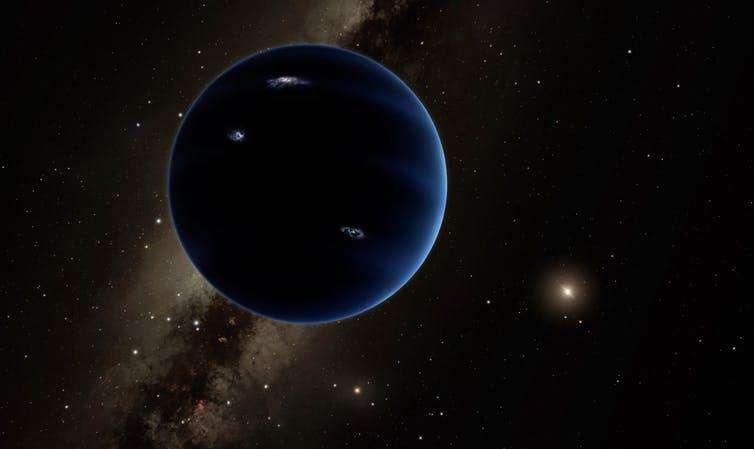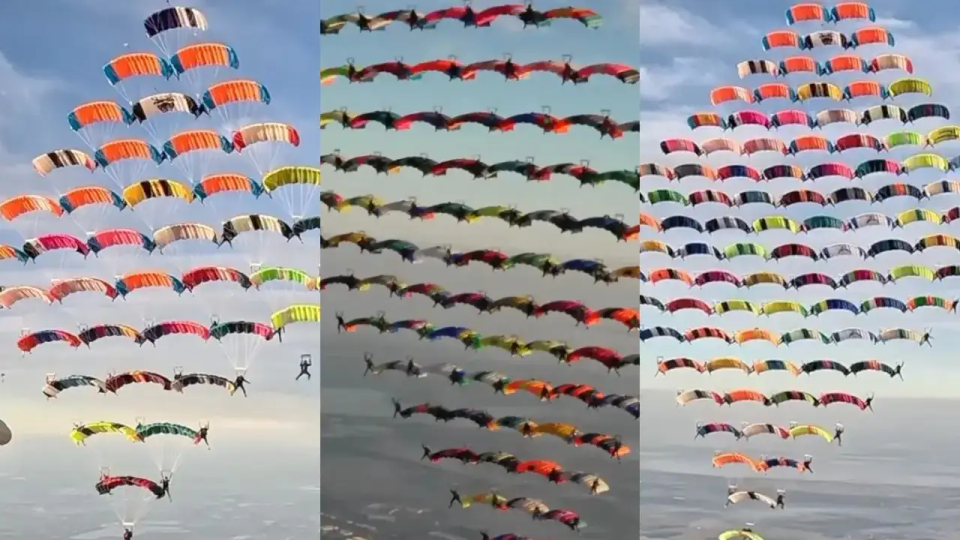Planet Nine is not real but there's something else strange on the edge of our solar system, scientists say
Wed 23 Jan 2019, 12:06:02

Scientists think they have found the cause of mysterious movements at the edge of our solar system – and it is not Planet Nine.
At the very edge of our neighbourhood, some objects appear to be orbiting in an unusual way that suggests something entirely unexpected is happening, without our knowledge.
Various scientists have suggested that could be the consequence of a huge hidden planet, ten times the size of Earth, hiding in the darkness in the distant reaches of the solar system. No such object has ever been discovered, but it has been hypothesised because of the unusual way objects we can see are moving around.
But now a new paper suggests an entirely different explanation: there is a disc made up of small icy bodies that put together is as much as ten times as massive as the Earth.
That explanation appears to account for the unusual orbits that can be seen in some objects in the distant solar system, the researchers claim.
The study would also help explain why we are yet to see Planet Nine, despite intensive searches for it.
"The Planet Nine hypothesis is a fascinating one, but if the hypothesised ninth planet exists, it has so far avoided detection," said co-author Antranik Sefilian, a PhD student in Cambridge's Department of Applied Mathematics and Theoretical Physics. "We wanted to see whether there could be another, less dramatic and
perhaps more natural, cause for the unusual orbits we see in some [of the distant objects].
"We thought, rather than allowing for a ninth planet, and then worry about its formation and unusual orbit, why not simply account for the gravity of small objects constituting a disc beyond the orbit of Neptune and see what it does for us?"
Scientists plugged that possibility into a model of our solar system and found that it appeared to explain the unusual movement of those distant objects.
The researchers admit that they have no more direct evidence of the disc than of Planet Nine. But the search is complicated by the fact that it is harder to see the properties of our own solar system, compared with those that we are looking at from the outside.
"When observing other systems, we often study the disc surrounding the host star to infer the properties of any planets in orbit around it," said Sefilian.
"The problem is when you're observing the disc from inside the system, it's almost impossible to see the whole thing at once. While we don't have direct observational evidence for the disc, neither do we have it for Planet Nine, which is why we're investigating other possibilities. Nevertheless, it is interesting to note that observations of Kuiper belt analogues around other stars, as well as planet formation models, reveal massive remnant populations of debris.
At the very edge of our neighbourhood, some objects appear to be orbiting in an unusual way that suggests something entirely unexpected is happening, without our knowledge.
Various scientists have suggested that could be the consequence of a huge hidden planet, ten times the size of Earth, hiding in the darkness in the distant reaches of the solar system. No such object has ever been discovered, but it has been hypothesised because of the unusual way objects we can see are moving around.
But now a new paper suggests an entirely different explanation: there is a disc made up of small icy bodies that put together is as much as ten times as massive as the Earth.
That explanation appears to account for the unusual orbits that can be seen in some objects in the distant solar system, the researchers claim.
The study would also help explain why we are yet to see Planet Nine, despite intensive searches for it.
"The Planet Nine hypothesis is a fascinating one, but if the hypothesised ninth planet exists, it has so far avoided detection," said co-author Antranik Sefilian, a PhD student in Cambridge's Department of Applied Mathematics and Theoretical Physics. "We wanted to see whether there could be another, less dramatic and
perhaps more natural, cause for the unusual orbits we see in some [of the distant objects].
"We thought, rather than allowing for a ninth planet, and then worry about its formation and unusual orbit, why not simply account for the gravity of small objects constituting a disc beyond the orbit of Neptune and see what it does for us?"
Scientists plugged that possibility into a model of our solar system and found that it appeared to explain the unusual movement of those distant objects.
The researchers admit that they have no more direct evidence of the disc than of Planet Nine. But the search is complicated by the fact that it is harder to see the properties of our own solar system, compared with those that we are looking at from the outside.
"When observing other systems, we often study the disc surrounding the host star to infer the properties of any planets in orbit around it," said Sefilian.
"The problem is when you're observing the disc from inside the system, it's almost impossible to see the whole thing at once. While we don't have direct observational evidence for the disc, neither do we have it for Planet Nine, which is why we're investigating other possibilities. Nevertheless, it is interesting to note that observations of Kuiper belt analogues around other stars, as well as planet formation models, reveal massive remnant populations of debris.
No Comments For This Post, Be first to write a Comment.
Most viewed from International
Most viewed from World
AIMIM News
Latest Urdu News
Most Viewed
May 26, 2020
Where should be the burial of the pilgrims martyred in the Saudi Arabia bus accident?
Latest Videos View All
Like Us
Home
About Us
Advertise With Us
All Polls
Epaper Archives
Privacy Policy
Contact Us
Download Etemaad App
© 2025 Etemaad Daily News, All Rights Reserved.





































.jpg)
.jpg)
.jpg)


